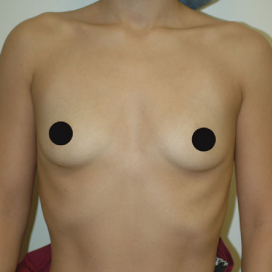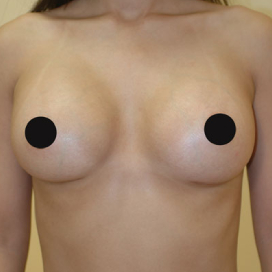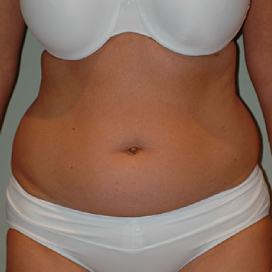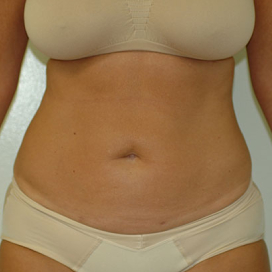Contents
INTRODUCTION
Diet and exercise are the most obvious means to get rid of fat. However, you might experience that some fatty areas on the hips, buttocks, thighs, arms, and neck, seem to be unaffected by these efforts. No matter how stringent your regimen is, you just can’t eliminate these unwanted bulges.
This is where liposuction comes to the rescue. Liposuction is a surgical technique for removing fats from your body, especially those stubborn against diet and exercise.
Liposuction is not to be treated as a weight-loss program. Although there could be some weight loss, its primary goal is shedding off the fats. If losing weight is your goal, then you’re better off with diet and exercise.
Bear in mind, however, that the liposuction NJ offers is not just a mere fat extraction from your body. Its primary aim is to sculpt your body, giving you an overall sleeker physique.
As of 2017, liposuction accounts for 246,354 procedures or 5 percent of the 1.8 million surgical procedures. These figures tell a story that liposuction is a rising trend not just because it is popular, but because it’s an effective fat removal treatment.
WHAT IS LIPOSUCTION?
For many decades, liposuction has been a famous surgical method in the cosmetic surgery world. Using a cannula, the surgeon “suctions” the excess fat to remove it, refining your body shape and contour. Its medical term is suction-assisted lipectomy.
Liposuction is an effective treatment to remove fat from the following regions of your body:
- Upper body, including the back
- Upper arms
- Buttocks
- Abdomen
- Chin and neck
- Hips and thighs
- Breasts and its sides
- Calves
You can have a single part treated or multiple parts at the same time, depending on your situation. The surgeon will guide you and discuss with you your expectations.
It can also be used to address diseases like gynecomastia or for breast reduction. As your weight increases, the fat cells also grow in size. Liposuction helps by reducing the number of fat cells in a particular area.
BENEFITS OF LIPOSUCTION
Liposuction is a surgical procedure that can benefit only one period of time. When done successfully, you can reap the benefits for a lifetime.
According to a study, liposuction is the fourth element in achieving long-term successful body contouring. The first three elements are exercise, diet, and lifestyle, which the person is responsible for.
Having said that, here are the benefits you can get from liposuction.
1) SAFE MEANS OF FAT REMOVAL
Despite the rampant practice of liposuction, many people are still not sold with this procedure. But to enlighten you – yes it is, provided that:
- The procedure is performed by our certified and experienced surgeon.
- You undergo a thorough examination and honestly disclose any medical history
- You carefully observe all pre and post-surgery guidelines
Modern liposuction is less invasive and has a shorter recovery period, so you can quickly resume your normal routine.
2) TREATMENT OF CERTAIN SKIN ISSUES
Undergoing liposuction is not just for aesthetical purposes but can also resolve these conditions:
- Gynecomastia
- Lymphedema
- Removal of excess skin due to weight loss
- Lipomas
- Lipodystrophy syndrome
3) PERMANENT REMOVAL OF FAT CELLS
It’s true! Removed fats will never grow back so its effects are long-lasting. Also, common misconceptions are the transfer of fats to other regions, which is not true at all.
However, this doesn’t guarantee that fats won’t grow in other areas. This is where your discipline comes in managing weight through a healthy lifestyle and regimen.
4) IMPROVEMENT IN APPEARANCE
The results of body contouring NJ are superb. When the fats get removed, you will experience a sculpted and firmer look that is pleasing to the eyes. With liposuction, you can have slimmer hips, reduced saddlebags, and a flat belly.
The tumescent liposuction, in particular, also helps to shape your jawline, neck, upper arms, waist, buttocks, knees, and ankles.
In effect, both men and women who aspire to wear swimsuits and jeans comfortably can do it. Liposuction makes their dreams come true.
5) BOOSTS SELF-ESTEEM
With a newly contoured look, you feel more confident about yourself even when wearing tight clothes. You become more comfortable about your body, giving you a more optimistic disposition.
LIMITATIONS OF LIPOSUCTION
The internet is flooded with feel-good writeups regarding liposuction, but it’s important to know what liposuction can do and what it can’t.
- It isn’t the direct solution for drastic weight reduction
The body mass index (BMI) is one of the barometers for a healthy body and yes, liposuction can positively impact weight by bringing it down, but not significantly. If you want to lose weight, start by maintaining consistent exercise and a healthy lifestyle. If you encounter stubborn fats, that’s the time to go for liposuction.
- It won’t tighten skin
Your skin laxity after the treatment will still be at the same level as before the treatment. When you remove fat, there is a possible sagging. In this case, you should exercise regularly.
- It won’t remove scars and stretch marks
These unsightly skin conditions occur in the dermis which is underneath the epidermis, the topmost layer of the skin. Over time, scars or stretch marks may fade but will be permanently visible.
- It won’t change your healthy lifestyle
Liposuction enhances your aesthetical appearance but the decision to maintain an active and lively lifestyle is still in your hands. After the treatment, it could be your springboard as motivation, but you have to maintain the momentum with your resolve.
AM I A GOOD CANDIDATE FOR LIPOSUCTION?
If you have excess fats deposited in one or more places in your body, which are tough to do away with, liposuction could be the better option. The primary qualification for liposuction is a healthy body condition since it is a surgical procedure that involves risk.
The best candidate for liposuction are those that can meet the following criteria:
- Does not exceed 30 percent of your ideal weight
- Have an elastic and firm skin
- Does not smoke
- Don’t have any underlying blood or heart diseases
- Don’t have a weak immune system
Dr. Gartner carefully looks into each of these qualifications to assess the gravity of your condition and the corresponding liposuction NJ offers.
PREPARING FOR LIPOSUCTION
The technical skills Dr. Gartner are crucial but it also matters if you prepare yourself for the surgery. Here are some ways you can prepare yourself before liposuction:
- Refrain from smoking and drinking alcohol.
Smoking or drinking can delay your recovery and might even cause bleeding. To be safe, do not smoke at least a month before the liposuction surgery.
- Avoid NSAIDs (non-steroidal anti-inflammatory drugs) that can cause bleeding
These include aspirin, ibuprofen, and other blood thinners. Do not take them at least 2 weeks before your surgery.
- Take Arnica tablets
To help with the bruising and swelling, you can take Arnica tablets 5 days before the procedure and continue taking them 10 days after the procedure.
- Prepare for someone to drive you home after surgery.
Whether you stay overnight or not, make sure you coordinated with someone who can take you home.
- Refrain from consuming any liquid or food 8 hours before the surgery.
- Prepare a bucket just in case you feel nauseated after.
Observing the mentioned preparatory measures improves the quality of the liposuction experience. To make your recovery smoother and more comfortable, you can arrange for the following:
- If you have children, have someone take care of them. For younger ones particularly, delegate the responsibility so you can maximize your recovery.
- Do household chores and laundry ahead so you won’t be burdened when you get home.
- Prepare comfortable attire. Since you are in healing mode, it would help if you wear loose clothing.
- Prepare medical supplies like bandages, soap, and cold packs.
- Prepare easy to prepare food so that you won’t have to cook after your surgery.
TYPES OF LIPOSUCTION PROCEDURE
Before we dive into the procedure, let’s familiarize with the different methods of liposuction. All these techniques share the same goal of extracting fats, but differ in the methodology and tools used.
1. TUMESCENT LIPOSUCTION
Tumescent is a fluid injection production where the doctor uses a sterile saline solution on the affected portion. This solution softens fat reserves so that they are easier to extract.
As a general rule of thumb, the solution to be prepared must be three times the volume of fat for removal. The fluid is usually a mixture of lidocaine (anesthetic), epinephrine (blood-contracting drug), and the salt solution, which all make the affected area swell and stiffen.
After making small cuts on your skin, the surgeon inserts the cannula under your skin where it suctions fluids and fats into a vacuum. An intravenous (IV) line can be used to replenish your body fluid.
2. ULTRASOUND-ASSISTED LIPOSUCTION (UAL)
Also called ultrasonic liposuction, this method uses a metal rod emitting ultrasonic vibrations to liquefy fat cells before vacuuming them out. This is performed by combining ultrasound with ultrasound waves in targeting fat cells.
There are two types of UAL procedures: internal and external. For Internal UAL, the surgeon inserts the probe into the patient while for external UAL, the paddle-like tools emit sonic vibrations outside the body and into the skin.
3. LASER-ASSISTED LIPOSUCTION (LAL)
Our liposuction clinic in NJ offers SmartLipo or laser-assisted liposuction. This method uses high-intensity lasers to remove the fat and make a magnificent sculpture on your body. The surgeon uses a thin tube and inserts it into a small incision on your skin where it delivers direct energy laser to the tissue, and eventually the adipocytes. With a light-guided laser, the surgeon can easily see through the skin.
SmartLipo is FDA-approved and minimally invasive compared to other liposuctions surgeries. This makes it a safer liposuction option. It usually requires just local anesthesia.
4. POWER-ASSISTED LIPOSUCTION (PAL)
The power-assisted liposuction uses a specially designed cannula that vibrates quickly and breaks up the fat tissue. PAL involves only a little pain and swelling, and allows the surgeon to remove fat in a precise manner. For voluminous fat removal, your surgeon could use this method.
All four methods are effective, but the Tumescent and Power-Assisted procedures are the most reliable options among the four. Aside from pure liposuction procedure, this could also be an opportunity to perform other facial or body procedures like tummy tuck and breast augmentation. You can even take advantage of the fat removed and transfer it to another area of the body like your buttocks or breasts.
THE PROCEDURE PROPER
Before the procedure starts, Dr. Gartner may mark outlines on parts of your body that will be treated with liposuction. They can take pictures of the area, and use these photos for the before-and-after comparisons.
STEP# 1: ANESTHESIA
To give you the maximum comfort during the procedure, you could be given medications, which include local anesthesia, general anesthesia, and intravenous sedation. For example, if the surgery involves a wide region or many regions, you will be given general anesthesia.
Having general anesthesia means you won’t be awake for the whole duration of the procedure, while local anesthesia means you will be awake but numb to pain. It’s the doctor’s discretion to choose the appropriate medications based on the evaluation conducted.
STEP# 2: INCISION
Liposuction is performed by making one or more small incisions on the concerned area. The surgeon could also infuse diluted local anesthesia to control the bleeding. To break up fat cells, the doctor can use high-frequency vibrations, laser pulse, or water jet.
The surgeon then inserts a cannula (a thin hollow tube) into the incision. With a gentle back and forth motion, the doctor suctions the unwanted fat using the vacuum or syringe equipped in the cannula. If there are excess fluid and blood, they will be drained.
Liposuction typically takes around 1 to 3 hours to complete. It’s highly advised to stay during the night but if you prefer to go home, you need to arrange in advance for someone to drive you.
To close the procedure, the doctor applied sutures and dressed.
LIPOSUCTION RECOVERY
Your recovery depends on the volume of fats taken away from you. There are also two types of recovery categories – immediate and long-term. Immediate recovery means you can resume your regular activities in 4 to 6 weeks, while long-term recovery can take up to 3 months.
Below are the recovery stages after your liposuction experience:
- Immediately after surgery
The doctor uses a compression garment to apply pressure and reduce swelling on body parts treated with liposuction. Compression garments have strong synthetic fabric that comfortably helps you in the healing process.
A couple of hours after the surgery, the aesthetic diminishes, giving way to mild discomfort. Expect slight soreness in the treated areas. It’s highly suggested that you stay overnight so the doctor can observe your condition.
- 3 to 5 days after surgery
This is the time you can visit the surgeon for a follow-up checkup, remove garments, and check your cannula incisions.
- The first week and thereafter.
After a week, you can gently massage the affected area to spread the accumulated fluid.
WHAT YOU CAN DO DURING THE RECOVERY
During the whole recovery process, your doctor should keep in touch with you to monitor your progress. This includes the appointment of regular check-ups and follow-up appointments. However, there are also things that you can do:
- Use compression garments during the first 72 hours after the surgery. Always wear them 24 hours a day. This method accelerates draining bulk anesthetic fluid, expediting your recovery process and reducing swelling, bruising, and pain.
- After surgery, you might feel sore during the first few hours. To get your blood flowing, get up and do light walking. Repeat this exercise for the whole recovery period.
- You can also perform light tasks like driving, light household cleaning, desk works, and others.
- Once you take off the bandages and you feel any discomfort, you can apply ice on the areas of liposuction.
- You can intake anti-inflammatory medications as pain relief.
What to Avoid During the Recovery
- Do not stress yourself while in the recovery stage and get enough rest, especially during the first three days when the incision points are left open to let the anesthetic fluid drain.
- Any form of immersion bathing should be avoided until the incision cuts are completely closed, which takes around 10 days.
- Do not perform demanding physical activities.
RISKS AND SIDE EFFECTS OF LIPOSUCTION
Liposuction is considered a safe procedure and its methods have improved drastically over the years. The equipment and techniques being adapted today are even more advanced. Just like other major procedures, liposuction also carries with it risks, like bleeding and anesthesia reaction.
Below are possible complications associated with liposuction:
- Contour inconsistencies. Skin can look wavy, bumpy, or withered if your skin has poor elasticity and the healing is unusual. The cannula used during the procedure might potentially produce a spotted appearance on your skin.
- Fluid buildup. Fluid pockets might develop under the skin. However, these can be drained using a needle.
- Numbness. You could feel a numbing sensation in the targeted area. It’s also possible to experience nerve irritations.
- Skin Infection. This is super rare but still a possibility.
- Internal injury. In rare circumstances, the cannula penetrates so deeply that it punctures an internal organ.
- Other issues
- Heart and kidney problems
- Excessive bleeding
- Pulmonary embolism (blood clot in the lungs)
- Change in skin color (redness or discoloration)
If you experience any of these symptoms, contact your lipo doctor immediately. To ensure a successful liposuction surgery and minimize risks of complications, choose an experienced doctor like Dr. Gartner with excellent credentials.
The larger the areas being targeted for liposuction, the higher the risk of the mentioned complications.





